As the title suggests, the idea for my newsletter was originally inspired by the stacks of charts – Chartbooks – with which macro analysts at investment houses edify their colleagues. Over time I have drifted away from that model. Instead, the newsletter has taken on the form of a “long read” essay. But, periodically, it is convenient and refreshing to revert to the original idea of Chartbook.
So, ahead of your weekend, here are a batch of charts that offer a snapshot of our world in the summer of 2022.
Start with three from the great Branko Milanovic on global inequality as the key to world history. Milanovic divides the history of the last two hundred years into three epochs: The Age of Empires and Class Struggle, The age of Three Worlds, the Age of Convergence.

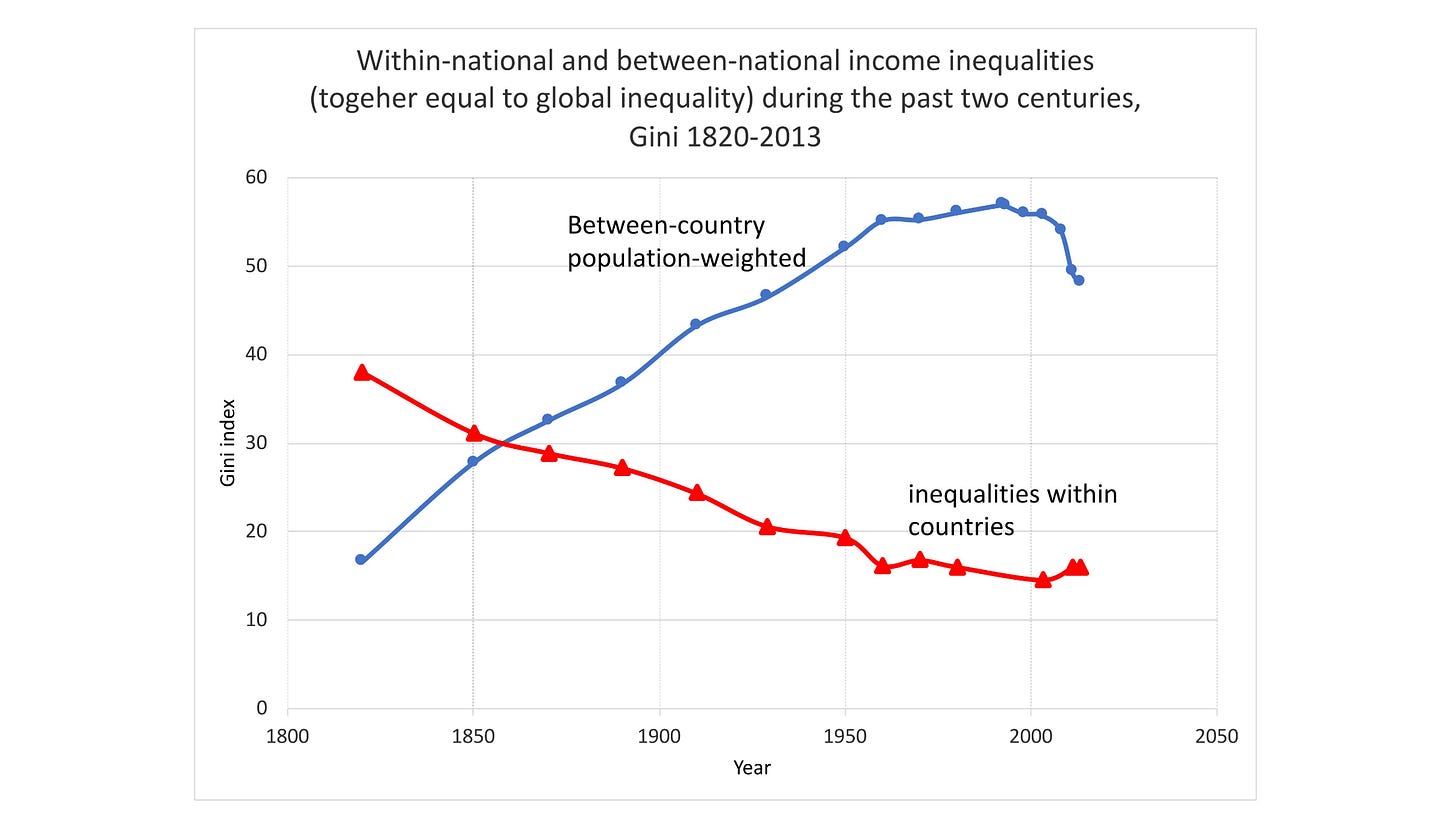
If you, theoretically, equalize all countries' mean incomes (but leave national distributions unchanged), you reduce global inequality to 23 points. pic.twitter.com/y5xsMvG4dz
— Branko Milanovic (@BrankoMilan) July 10, 2019
EVERYONE should follow @BrankoMilan and his remarkable blog http://glineq.blogspot.com/
A key factor in the decades ahead will be the demographic development of the world’s workforce. By 2050 the population of Africa of working age will outnumber the working-age population of the world ex-Asia.

Meanwhile, thanks to the logic of the simple equation:
Environmental impact = population * GDP per capita * environmental intensity of unit of GDP
the balance of CO2 emissions around the world has dramatically shifted. And yes these are national numbers so they show where production not consumption is located.
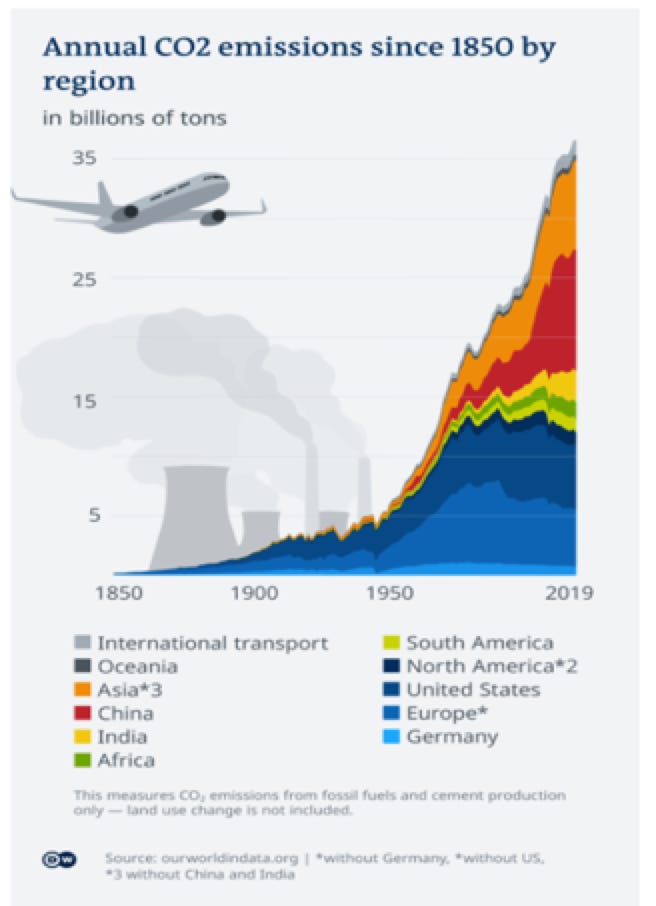
I chose those numbers so as to segue with data for the development of global value chains and the global division of labour in recent decades.
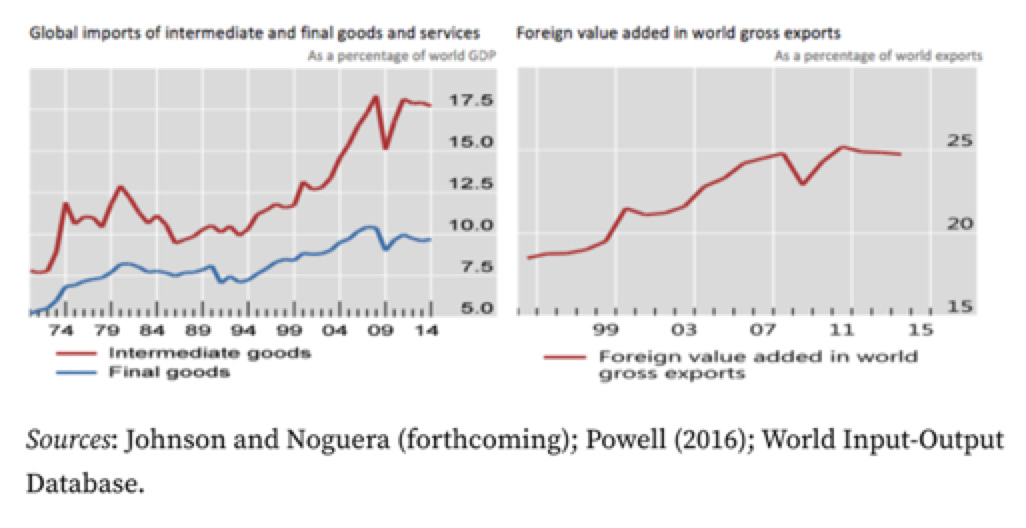
Shifting industrial production from the West to Asia helped to drive the huge surge in Asian CO2 emissions. “Helped” is the operative word here. The basic drivers of Asian economic growth have been domestic, above all, the gigantic process of urbanization and the incorporation of hundreds of millions of people into the urban workforce. That is what drives steel and cement production in China.
In China as private property rights were established, this has gone hand in hand with the most gigantic real estate boom in history.

China’s property boom is the material base for the growth of China’s middle-class.
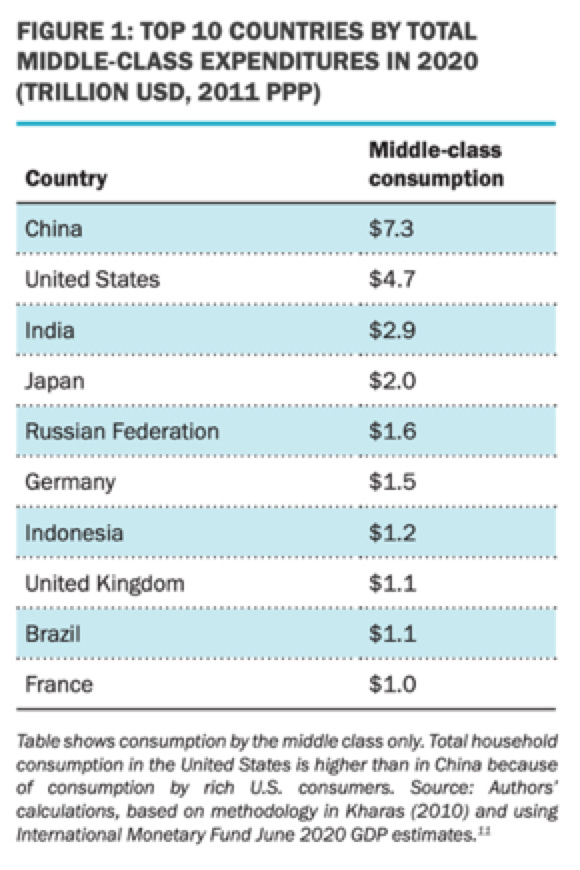
Chinese middle-class consumers are now a huge driver of global demand. They are also the great driver of the trend towards global convergence in inequality, which Milanovic’s data reveals so starkly.
The fact that the Chinese real estate boom is now tottering is not just a cloud on the financial horizon. Along with zero covid and the tech war launched by the West, this is the single most ominous cloud hanging over the world economy and the entire developmental narrative of recent decades.
In recent decades China has been the single most significant contributor to global growth (at least in statistical terms, Matt Klein and Michael Pettis may beg to differ on the Keynesian demand-side of this).
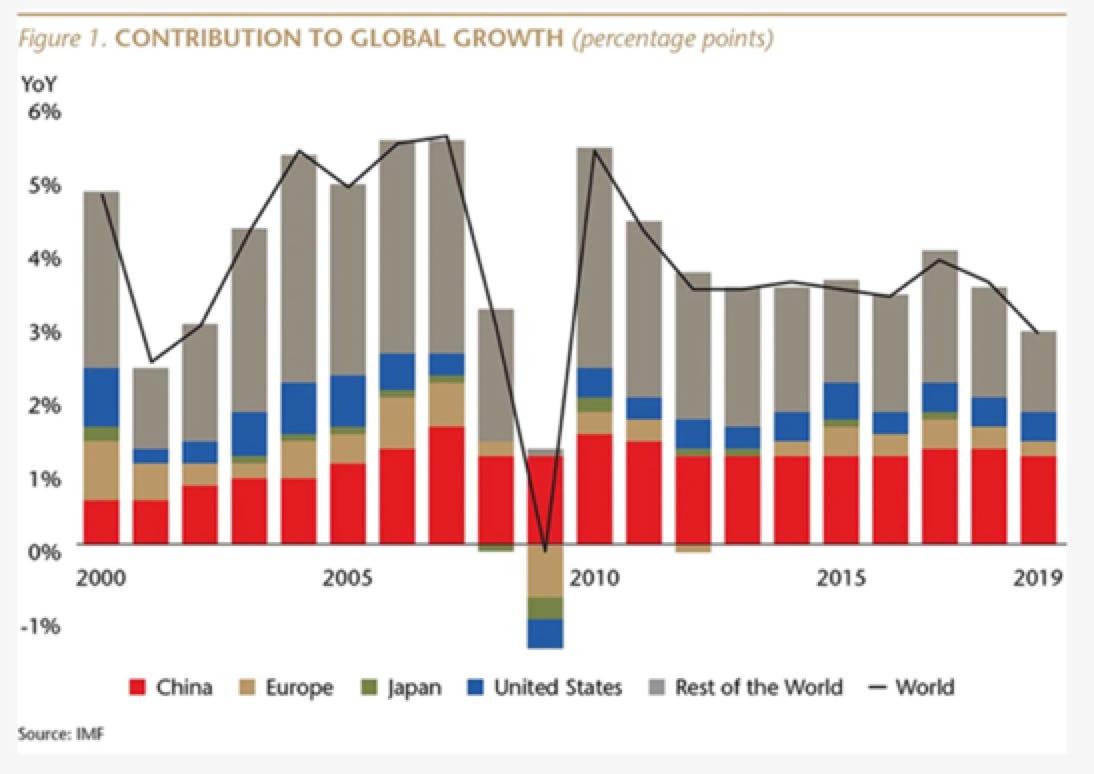
And at this moment, as central banks around the world engage in dramatic coordinated tightening of monetary policy, China remains the most significant source of potential stimulus.
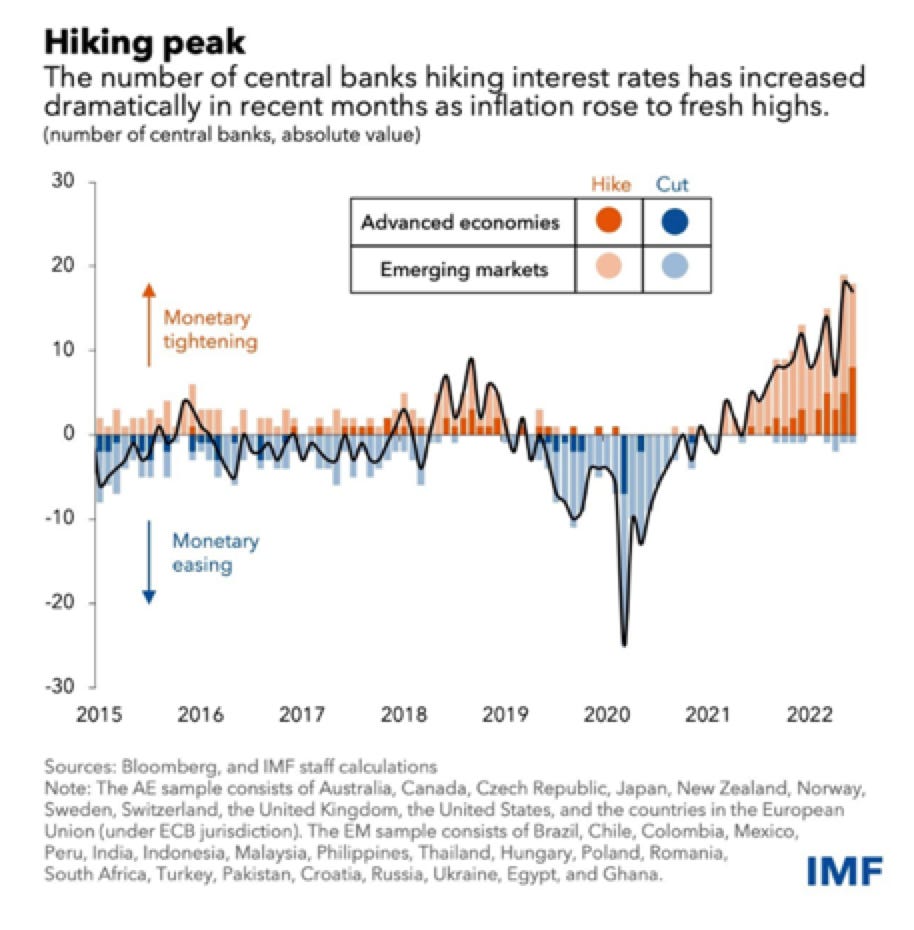
China right now is running an epic trade surplus, but what we should not expect is a resumption of export-led growth based on low labour costs. That model is no longer relevant as far as China is concerned. Thanks to its remarkable development in recent decades it now has relatively high unit labour costs by emerging market standards.
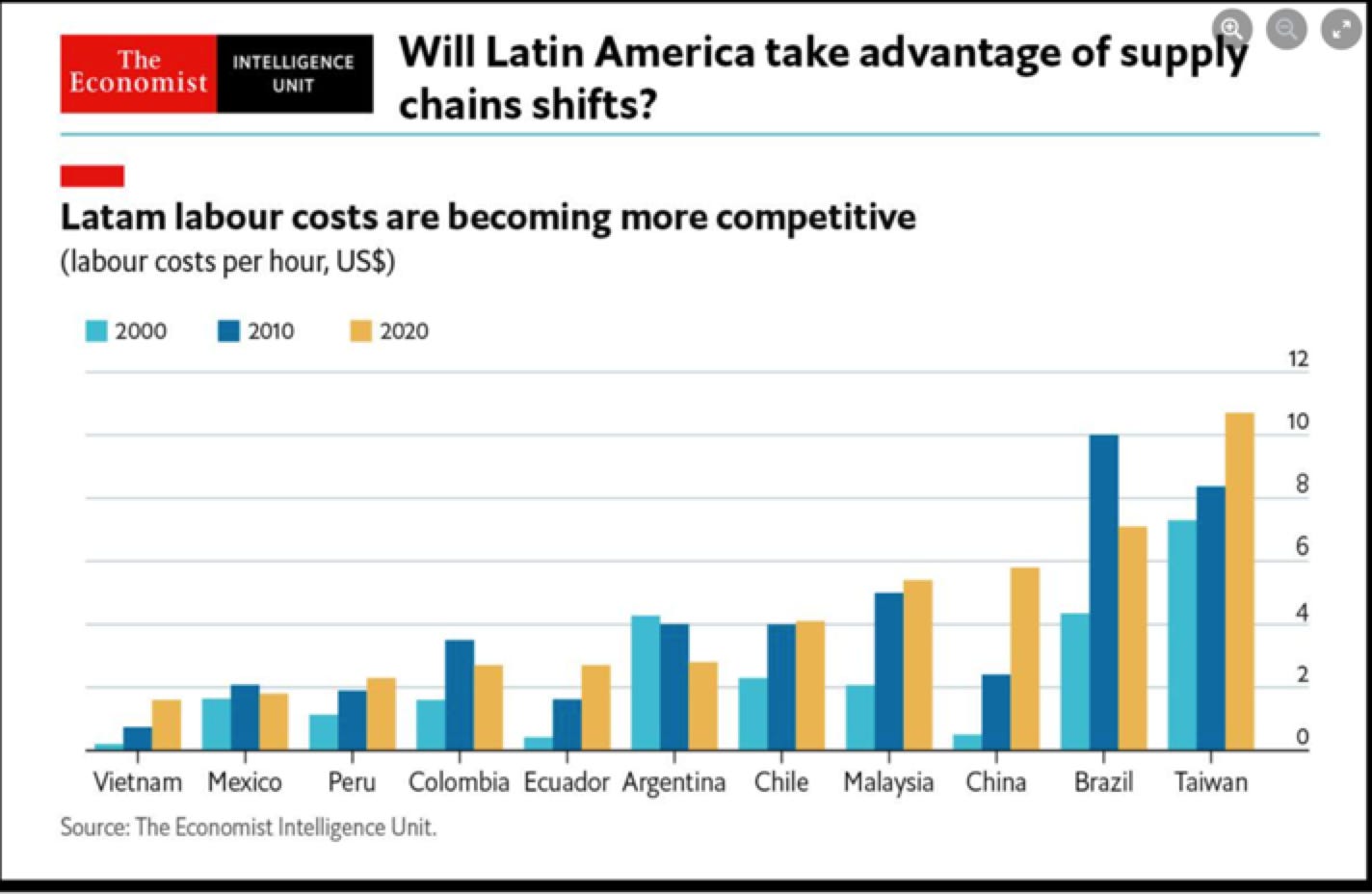
Though Latin American countries have struggled to take advantage of the opportunities this opens up, others have been more quick to move into the slots opened up by China’s development.
The most remarkable is Bangladesh, whose garment exports have surged spectacularly.
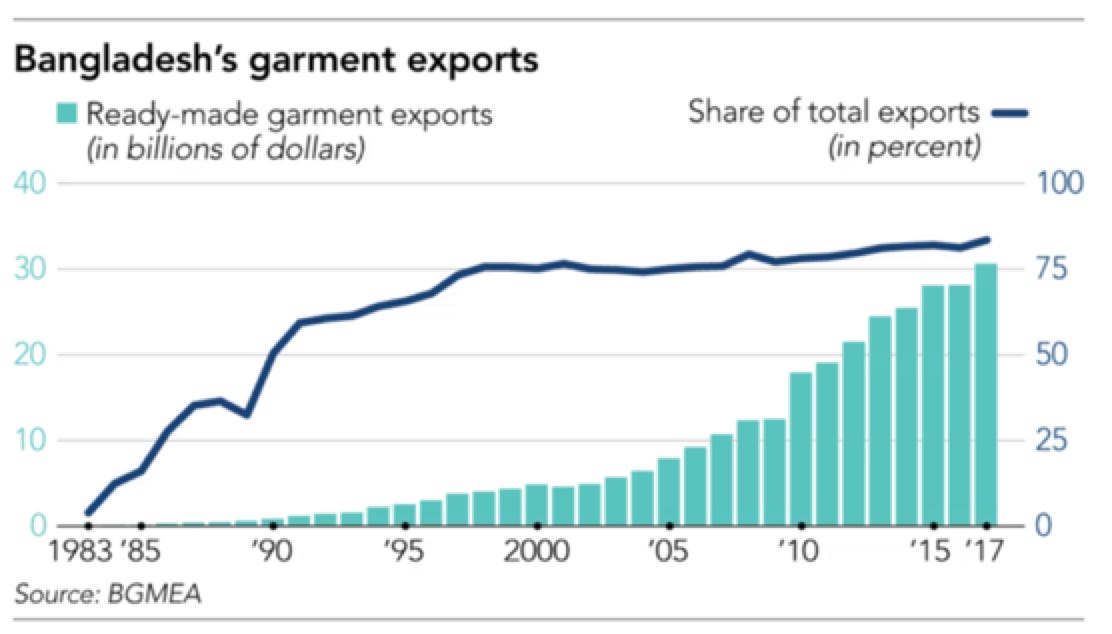
Putting these snapshots together, one way of formulating the question of the future of globalization at the big picture level is as follows: Can we imagine a future in which the huge surge in the working-age of population of Africa is incorporated into the world economy as Asia’s youth bulge eventually was from the 1980s onwards. (Reupping a famous IMF graph from 2007) If Africa were to be incorporated it would continue the convergence dynamics of Milanovic’s third epoch.

If on the other hand Africa is not deeply incorporated into the global division of labour, does this presage a new phase in the history of global inequality? After “Empire and class struggle”, “Three Worlds” and the few decades of “Global convergence”, are we about to enter the era of a new, “two world divide”?
****
I love putting out Chartbook and I am particularly pleased that it goes out free to thousands of readers all over the world. But it takes a lot of work and what sustains the effort is the support of paying subscribers. If you appreciate the newsletter and can afford a subscription, please hit the button and pick one of the three options.
There are three subscription models:
- The annual subscription: $50 annually
- The standard monthly subscription: $5 monthly – which gives you a bit more flexibility.
- Founders club:$ 120 annually, or another amount at your discretion – for those who really love Chartbook Newsletter, or read it in a professional setting in which you regularly pay for subscriptions, please consider signing up for the Founders Club.
